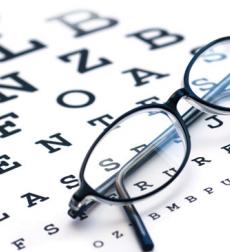What is shortsightedness (myopia)?
Shortsightedness (or nearsightedness) is a common vision problem. The official medical term is myopia, and it is often caused by too long eyeballs. People with shortsightedness can see close objects clearly, but not from a distance, because their vision becomes blurry.
The light is focused too early in the eyeball, and this way it misses the correct spot on the retina: the result is a blurry picture. The light is focused too far in front of the retina, or the back of the eye, instead of being focused directly on the retina’s surface.
Distance between the retina and the lens is longer in short-sighted people than the average. Reading might not cause any difficulty, but you may have trouble seeing objects from a distance (e.g. chalkboard, television, road signs).
The opposite of shortsightedness is farsightedness, which is otherwise known as hyperopia.
What causes short-sightedness?
The first instance of short-sightedness usually occurs in the early teens, when children are growing rapidly. It is important for children to have regular eye tests to check for problems, especially if someone in the family also has a problem with short-sightedness.
Nearsightedness, or myopia, usually stabilizes when the body stops growing, but it can become worse with age. Shortsighted people very often have headaches, eyestrains, and their eyes are often fatigued during activities which require distant vision.
How to cure short-sightedness
The exact treatment for short-sightedness depends on a couple of factors. Myopia is easily corrected by wearing glasses or contact lenses. Laser vision correction is recommended up to -12 dioptres, for slightly short-sighted people.
Patients who have more serious refractive damage, correction by laser is not an appropriate treatment. In these cases, we use an ultrasound surgical technique, which is called phacoemulsification. With this latest and state-of-the-art U.S. technology, patients can get their perfect vision back. The ultrasound technique is a totally safe treatment; another advantage of the surgery is the extremely short recovery period.
The treatment is done by breaking the central section of the crystalline lens into smaller pieces and then removing them. Eye specialists usually correct short-sightedness with a corrective lens. These lenses allow the light entering the eye to be focused correctly on the retina. After the surgery, vision is greatly improved, and this effect is permanent.
IntraLASIK or PRK vision correction surgeries are an option for adults who are slightly short sighted, which means less than -6 to -11 dioptres.




